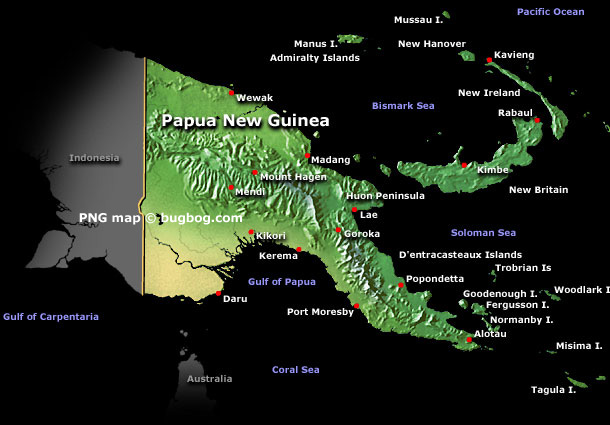
Yehiura Hriehwazi
PORT MORESBY (The National / Pacific Media Watch): Papua New Guinea has been identified as among 20 countries in the world that is “most vulnerable” to fall under the “resources curse”.
Countries whose mineral and oil/gas exports account for 25 percent of their total exports were likely to become victims of the resources curse.
In PNG’s case, mineral, oil and gas account for over 60 percent of export revenue.
A study carried out by Oxford Policy Management (OPM) of mineral dependent countries – believed to be the first of its kind – found more than 20 low and middle-income countries “have become dangerously dependent on the exports of minerals such as metals and hydrocarbons, leaving the countries highly-vulnerable to a global economic downturn”.
About 75 percent of all mineral-dependent countries were now low-and middle-income countries, while the number classed as mineral-dependent has increased by 33 percent since 1996 from 46 to 61 nations, according to the OPM report, “Blessing or curse? The rise of mineral dependence among low- and middle-income countries.”
The study attempted to assess the vulnerability of resource-dependent nations on the so-called resource curse, characterised by weak economic and institutional development.
Six types of minerals were considered, including crude fertilisers, metalliferous ores (ores containing metals) and metal scrap, non-ferrous metals, pearls and semi-precious stones, non-monetary gold, and minerals fuels including natural gas.
The report developed an overall measure of institutional strength of a country by combining the World Bank’s six World Governance Indicators (WGI) with two indices: an economic and institutional development index, and a mineral dependence index.
Control of corruption
The World Bank WGI includes voice and accountability, political stability and absence of violence, government effectiveness, regulatory quality, rule of law, and control of corruption.
Mineral-dependent countries were defined as countries which rely on minerals for at least 25 percent of their tangible exports.
“Excluding Botswana and Chile – both of which have well-established and long-running mining sectors – the average annual GDP per capita of the top-20, non-fuel, mineral-dependent countries was US$3,200 in 2009,” the study said.
The mineral-dependent nations with the lowest GDP per capita included the Democratic Republic of Congo (US$319), Sierra Leone (US$808) and Mozambique (US$885).
The most dramatic changes in the number of mineral-dependent companies occurred from 2005 to 2010, when commodity prices started to soar.
During this period, eight additional nations became dependent on non-fuel minerals: Montenegro, Guyana, Laos, Burkina Faso, Bolivia, Georgia, Somalia and Ghana.
Only one country became dependent on fuel-based minerals during the same period: Belize.
In their research, Oxford Policy Management found “a significant negative correlation between overall institutional development and both non-fuel and fuel-dependence.
“This finding is consistent with evidence that there are many fuel-dependent countries with high levels of GDP per capita but with persistent weaknesses of democratic governance and state accountability, such as Equatorial Guinea, Libya and Russia.”
Dan Haglund, a political economist focused on natural resources policy, generated two matrices which defined countries most at risk from the “resource curse” due to critical reliance on minerals exports for foreign exchange earnings and therefore most vulnerable to international commodity markets.
“They are also the most severely constrained in terms of economic resources and effective institutions,” he observed.
“These countries have limited industrial diversification that would enable either ‘upstream’ supply industries to develop or ‘downstream’ value addition.”
The matrices identified the non-fuel, mineral-dependent countries most at risk were Bolivia, Burkina Faso, the DRC, Ghana, Guyana, Laos, Mali, Mauritania, Mongolia, Papua New Guinea, Tanzania and Zambia.
(cc) Creative Commons



